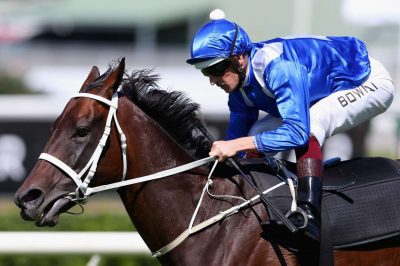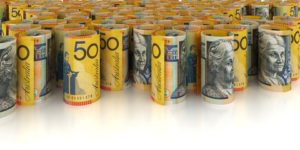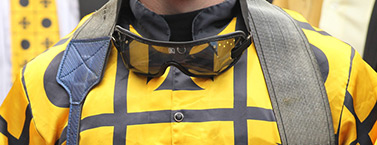
What has changed the whole horse racing industry has been the advent of the internet and the huge advances in technology that have ballooned online punting. This has led to much more interest in the possibility of betting on horse racing as a way to create a consistent income stream. In addition, the internet has given rise to a whole new breed of punter who uses data bases, spreadsheets and financial models to analyse the huge amount of information available.
But, what hasn’t changed are the disciplines that punters need to adopt to be successful. Let’s look at the different areas and skills that you need to use consistently to ensure that you make money betting on horse racing. And for the best odds and value, sign up below to our recommended betting platform, Betfair.
MONEY MANAGEMENT WHEN BETTING ON HORSE RACING
You need to start each day with a strategy and a plan around staking, value and risk management, and have the discipline and commitment to stick with it. The fastest way to lose money is to ignore these critical elements.
A staking plan is the holy grail of punting and often seems hard to maintain. Stick to a constant staking plan and if you have $20 on an even money chance in Race 1 you should still be having $20 on an even money horse in Race 8, no matter what.
Value is punting on a horse when the bookmaker or exchange is offering much better odds compared to your assessed or rated odds. Just like getting a great deal in January sales!
A punter who is aware of risk management in this game will start with a bank and will risk a maximum of 2% of that bank in each race. You need to avoid at all costs the tendency to bet more and more in a desperate attempt to chase and win back losses.

WHEN TO BET IN HORSE RACING
It is critical take notice of the signs that a race is the right one to assess before doing the form or placing a bet. What are these signs?
SIGN 1
Races of horses of the highest class at set weights.
SIGN 2
Races in which all runners have a long form history with all strengths and weaknesses known.
SIGN 3
Races in which one or two of the runners have more potential than their rivals, and this will show in their form.
SIGN 4
Races in which your rated prices are markedly different from the bookmakers or exchange prices. Colloquially, an upside down race.
WHEN NOT TO BET IN HORSE RACING
Even more important than knowing when to bet, is knowing when to leave your money in bank. What are the factors that keep you out of a race and stop you betting on a horse?
FACTOR 1
Races held when the going is on the worse side of slow/heavy or very heavy.
FACTOR 2
Races for early two year olds.
FACTOR 3
Races for horses of the lowest, for example, Maiden Races Bench Mark 58.
FACTOR 4
Races in which a number of the main chances are resuming from a spell, that is, first up.
FACTOR 5
Races in which your prices are the same as the book makers prices so there is no value to be found.
FACTOR 6
Races in which your top horse is odds on (look on).
MANAGING RISK WHEN BETTING ON HORSE RACING
There are a number of ways to look at risk management in punting, and one of the best is to operate in a statistically favourable environment. What does this mean in practice?
- Most winners have either won or been placed at their last start.
- Most winners are in the first four market favourites.
- Horses that race on the speed have an advantage over backmarkers.
- Look for horses that have high strike rates at the race distance and the track.
- Look for horses that are not going to be disadvantaged by a poor barrier draw or track conditions.
- Factor in class and distance.
- Look for fields of ten horses or less.
To further manage risk you can use Dutch Betting or Percentage Punting to back two or more horses in a race to make a specific return per race. The returns per race are less than when you back one horse but the chances of winning in the race are much higher. This fits with the win small, win often mindset.

CONSISTENTLY FIND VALUE WHEN BETTING ON HORSE RACING
Whatever selection process you use to determine what horse to back, the vital part in punting is VALUE. You need to be obtaining value, always, to make money betting on horse racing in the long term. A horse may have every compelling reason to back it, but, whether it is a good bet or not is entirely determined by one thing only. The odds.
This is the crux of making money betting on horse racing. Finding the horses whose price in the market is higher than their rated price based on their probability of winning. Long term profitability will come when you consistently benefit from the difference between the rated price and the market price.
This is described as an overlay. Where the odds on offer in the market exceed the calculated or rated price of the horse. It is also sometimes described as a runner that has been under bet by the general public resulting in an inflated price.
Framing the race market, also referred to as rating the horses in each race, is a skill that can be learned yourself. Or, if you are time poor, you can purchase this information from professionals who have experience and credibility in framing markets. Framing the market is the cornerstone that will let you identify value in horse racing and will be the only way towards making money on horse racing consistently.
KEEPING RECORDS OF YOUR HORSE RACING BETS
It is crucially important for anyone betting on Horse Racing, and especially serious long term punters, to keep meticulous records. You need to know at any given point precisely where you are financially and if you are on target to achieve your goals. You must record EVERY bet.
FOLLOWING MONEY MOVEMENT IN THE HORSE RACING MARKET
Tracking what’s happening in the betting markets, and where the money is going, provides information to be used along side of the ratings or market framing that you have. A quick way to access Money Movers is to follow along with the Free Horse Racing Tips each day from RaceBiz.

KNOW YOUR BET TYPE WHEN BETTING ON HORSE RACING
There are as many different betting strategies in use as there are punters. And for each individual it’s a matter of choosing the bet type or types that suit the way they like to punt.
AUSTRALIAN BETTING TYPES FOR HORSE RACING:
WIN AND PLACE
WIN
Win only or “Straight Out or On the Nose” is a bet placed on a runner to win only.
PLACE
Place only is a bet placed on a runner to run 1st, 2nd or 3rd subject to field size.
Eight or more runners will pay 1st, 2nd and 3rd.
Five to Seven runners will only pay 1st and 2nd.
Less than Five runners will only pay first only.
EACHWAY BET.
Each way bet is actually two bets:
(1) a Win bet (like above) and
(2) a Place bet (like above). For example, a bet of $10 Each Way is a Win bet of $10 and a Place bet of $10. That is, $10 Each Way is a $20 bet in all.
If you have $10 each way on a horse paying $10.00 for a win and $2.50 for a place you will outlay $20.00.
If runner wins you return $125.00 ($100.00 for win and $25.00 for place).
If runner runs a place you return $25.00 (Zero for Win and $25.00 for Place)
BEST ODDS.
It guarantees the better of the official Bookmakers’ starting price (SP) and the official Win dividend declared by a TAB as nominated.
VIC Tab paying $2.30, NSW Tab paying $2.30 & UNItab paying $2.55 then the Best Odds dividend would be $2.55 at UNItab.
STARTING PRICE (SP)
The Starting Price is an average of the on-course bookmaker’s prices taken at the start of each race. These prices are not known by punters at the time of betting.
If you have $100.00 on a runner to win at SP and the final Starting Price is $3.30 then you return $330.00. If during betting the horse drifted out to $4.25 before firming again then you only get the SP price and miss the best price offered.
BEST FLUC
Best Fluctuation or Top Fluc, is available up to 30 minutes prior to jump. Bets placed prior are guaranteed to be paid at the top official on-course bookie fluctuation as determined by the Bookmakers Pricing Service (BPS). the Win portion will be paid at the best official Bookmakers’ price. For Win/Place wagers, the place portion will be paid at a price equivalent to the Tote Place dividend declared in the state in which the race is run.
You have $100 a win on a runner at Best Fluc and during betting the fluctuations are as follows $4.20 | $4.50 | $4.40 | $4.70 then the Best Fluc is $4.70 which returns you $470.00.
FIXED ODDS
Fixed Odds is a set price at which the Win portion of a bet will be paid at the fixed price as determined by the bookmaker.
$100.00 a Win at the Fixed Odds of $4.20 will return you $420.00 and if the horse drifts out to $4.50 during betting then you missed the best price, however if it firms into $3.90 then you got the better price at the time.
EXOTIC BETS
QUINELLA
A Quinella bet requires you to select the first and second place finishers, in either order.
If you have $2.00 on numbers 4 and 6 to run the Quinella then either horse can win or run second (4-6-x or 6-4-x) but they must both finish 1st and 2nd for you to win. Quinella dividends are calculated by the amount of total money in the pool at race end and a dividend is then declared after the race is run.
BOX QUINELLA
A Box Quinella allows the ability to choose as many runners as you like from the same race, however two of the selections must place First or Second in any order. It also costs you more for your initial outlay as there are more runners.
If you have a $1 Quinella on numbers 1, 2, 4 and 5 then first you need to calculate the cost for boxing 4 runners.
To box a Quinella for $1
3 Runners – $3.00
4 Runners – $6.00
5 Runners – $10.00
6 Runners – $15.00
7 Runners – $21.00
8 Runners – $28.00
9 Runners – $36.00
To box 4 runners, the bet will cost you $6 and if any of your four runners finish 1st or 2nd then you win your bet.
STANDOUT QUINELLA
The Standout Quinella is when you specify a group of runners that you think may come first, and a group that may come second, specifically in that order.
If you had a $1 Quinella with number 2 to win and numbers 4, 5, 6 and 7 to run second then number 2 has to win the race while the other four have to run second for your bet to win. It will also cost you $4 to place the bet as there are in effect four Quinellas which are 2&4, 2&5, 2&6 and 2&7
EXACTA
An Exacta bet requires you to select the first and second place finishers, in that order.
If you have a $2.00 Exacta on numbers 8 and 2, then number 8 has to win and number 2 has to run second for you to win your bet. Exactas traditionally pay more than Quinellas but they are also harder to win as they have to run 1st and 2nd in order.
BOX EXACTA
The formula for calculating the cost of an exacta box is (horses in box x (horses in box minus 1) x dollar amount of bet). A $2 box of two horses would be (2 x 1 x 2) = $4. A $2 box of three horses would be (3 x 2 x 2) = $12. A $2 box of four horses would be (4 x 3 x 2) = $24.
As you can see the cost of the exacta box increases greatly with each additional horse. Also remember that you can wager a $1 exacta box. This reduces the amount of your wager by 50% but also reduces your earnings by 50%.
To box an Exacta –
3 Runners – $6.00
4 Runners – $12.00
5 Runners – $20.00
6 Runners – $30.00
7 Runners – $42.00
8 Runners – $56.00
9 Runners – $72.00
TRIFECTA
The bet requires you to select the 1st, 2nd and 3rd place finishers in order.
If you have a $1.00 trifecta on the numbers 4 to win, 5 to come second and 8 to run third then they would have to finish in the order 4-5-8 for you to win.
Trifecta’s can be also being done as Boxed, or Standout bets as per Quinella bets.
BOX TRIFECTA
These are offered at most racetracks in denominations as low as $1 per unit, a $1 trifecta box of horses 1-3-5 would include six $1 combinations at a cost of $6 and would pay off if the order of finish were 1-3-5, 1-5-3, 3-1-5, 3-5-1, 5-3-1 or 5-1-3.
To calculate the cost of a trifecta box, multiply the number of horses you would like to box by that number minus one and by that number minus two, and then multiply it by your bet amount.
If you wanted to have a $1 Box trifecta with 4 horses the $1 trifecta box would be calculated as follows: (4 * 3 * 2) * $1 = $24 (24 $1 combinations.) If any three of your selections fill the first 3 placing’s, then you would win the bet.
Below follow the calculated costs of $1 trifecta boxes:
· $1 trifecta box of 3 horses = 6 possible combinations = $6.
· $1 trifecta box of 4 horses = 24 possible combinations = $24.
· $1 trifecta box of 5 horses = 60 possible combinations = $60.
· $1 trifecta box of 6 horses = 120 possible combinations = $120.
· $1 trifecta box of 7 horses = 210 possible combinations = $210.
· $1 trifecta box of 8 horses = 336 possible combinations = $336.
· $1 trifecta box of 9 horses = 504 possible combinations = $504.
STANDOUT TRIFECTA
The runner selected to finish first (a standout) is combined with two or more other runners to finish second and third in any order. You can also standout a single runner to finish second or third if you wish.
If you had a $1 standout Trifecta on number 5 to win and numbers 1, 2 and 3 to run 2nd and 3rd then number 5 would have to win and the other three would need to fill the 2nd and 3rd placing’s for your bet to win.
FLEXI BET TRIFECTA
Flexi bet allows you to still specify the number of runners you wish to back but you can also specify what amount you would like to invest based upon your budget. The payout you receive will be a % of the winning dividend based upon the difference of the normal cost of a boxed Trifecta and the amount you chose to invest.
You want to box 5 horses in a trifecta. This would normally cost $60 however you only wish to invest $15. If your selections win then you will receive 25% of the Trifecta dividend which is based on your bet of $15 divided by the normal cost of $60 = 15%. If the trifecta pays $2400.00 then you return $600.00 which is 25% of the trifecta dividend.
FIRST 4
First4 requires selection of the first four finishers in correct order.
There are four different types of First 4 betting – Straight, Box, Standout and Multiple First 4’s.
Straight First 4
Requires selection of the first four placing’s in a race in the CORRECT order.
Box First 4
First4 bet allows your selections to finish first, second, third and fourth in ANY order. Boxing four selections gives you 24 combinations with which you can win First 4.
Standout First 4
One runner is selected to finish 1st (ie a standout) and is coupled with three or more runners to finish second, third and fourth.
Multiple First 4
A multiple First 4 is where two or more runners are selected to finish 1st, with a number of other runners to finish 2nd, 3rd and 4th.
QUADRELLA
A Quadrella requires you to pick four winners from four races nominated by a TAB at the one meeting. A Quadrella differs from an All-Up in that the dividend is determined by dividing the amount of money in the dividend pool amongst successful investors, as opposed to an All Up that transfers your winnings from one race to the next.
The minimum investment for a Quadrella here is 50 cents, however all dividends will be displayed for $1. Flexi and Mystery Quaddie betting are also available.
To calculate the amounts, you need to spend to couple more than one horse in each leg simply multiply the number of selections in each leg together.
You want to have a $1.00 quadrella with 2 runners in each leg. This will cost you a total of $16 (2 x 2 x 2 x2) to get a full 100% return.
Some bookmakers provide their own exotic options, with Sporting bet Australia having a Place Card. This is selecting a horse to place in four designated races, and exclusive to Sporting bet. It is basically a quadrella for place getters.
MULTI BETS
DOUBLES
Daily Doubles and Extra Doubles requires you to correctly pick the winners of two TAB nominated races at a meeting
You have a $1.00 Daily Double and take number 2 to win the 1st leg (Race 5) and number 6 to win the 2nd leg (Race 7) and they will both need to win for you to win your bet. Double dividends are calculated by the amount of total money in the pool at race end and a dividend is then declared after the race is run.
RUNNING DOUBLE
The Running Double requires you to correctly select the winners of any two consecutive races at the one race meeting e.g. Race 2 winner and Race 3 winner.
TREBLE
Treble is picking the winner of three separate races.
You have a $1.00 Treble and take number 3 to win the 1st leg, number 6 to win the 2nd leg and number 9 to win the 3rd leg. All three bets will need to win for you to win your bet.
ALL UP BET.
Accumulator or Parlay. An All Up allows you to select one or more runners to win or place on different races and all of your selections are required to be successful for the All Up to win. The payout is worked out by multiplying your initial stake amount by the odds for each of your selections.
You have a $1 all up on four races at a meeting. Number 2 (Race 2), Number 4 (Race 4) number 6 (Race 6) and number 8 (Race 8).
Assuming all runners win…
Race 2 – $1.00 on number 2 @ $4.00 now you have $4.00 which goes all up.
Race 4 – $4.00 goes on to number 4 @ $3.00 now you have $12 which goes all up.
Race 6 – $12.00 goes on to number 6 @ $4.00 now you have $48 which goes all up
Race 8 – $48.00 goes on to number 8 @ $2.00 and your total return is $96.00
All up betting allows you to win a large amount of money for a very small outlay. Most bookies allow you to have all up bets over different meetings and different race codes such as Harness racing and Greyhounds.
PARLAY BETTING.
Another form of Multi-bet is the Parlay which is a set number of combinations where all are required to win for you to be successful. Each Parlay has a set number of legs but when you select a Parlay, you are choosing all possible combinations of Multi-bets for that number of legs. In addition, some Parlays, also include single bets on each selection or leg.
The key advantage of a Parlay over a standard multi is that if some of your legs are successful then you will still win a dividend based upon how many successful combinations you chose.
- Trixie – (3 legs – no single bets – $4)
4 bets on three legs. ($4 total for a $1 bet).
1 x 3-leg multi; 3 x 2-leg multi. - Patent – (3 legs with three single bets – $7)
7 bets on three legs. ($7 total for a $1 bet).
1 x 3-leg multi; 3 x 2-leg multi and 3 single bets. - Yankee – (4 legs – no single bets – $11)
11 bets on four legs. ($11 total for a $1 bet).
1 x 4-leg multi; 4 x 3-leg multi; 6 x 2-leg multi. - Lucky 15 – (4 legs – 4 single bets – $15)
15 bets on four legs ($15 total for a $1 bet).
1 x 4-leg multi; 4 x 3-leg multi; 6 x 2-leg multi and 4 single bets.
There you have it. Follow these guidelines, be disciplined and consistent and manage your risk and money and you can make money betting on horse racing.
Not sure what is the best strategy for you?
Not sure how to work out when to bet and when not to bet?
Not sure where to get reliable information for doing the form and ratings?
If you answered yes to any of these questions, reserve your time now for a 30 minute one-on-one training session with me by clicking the button below:
Tim Wyatt
